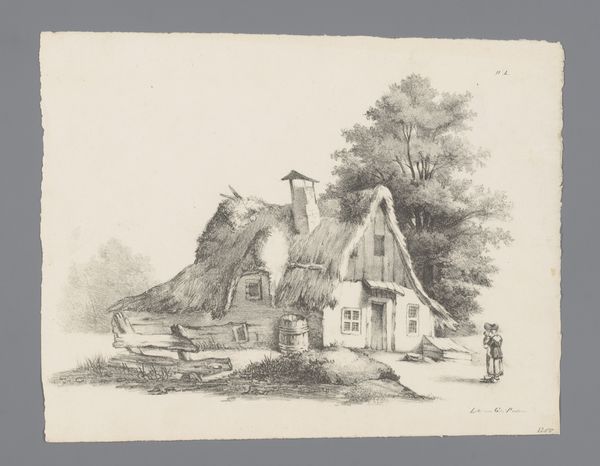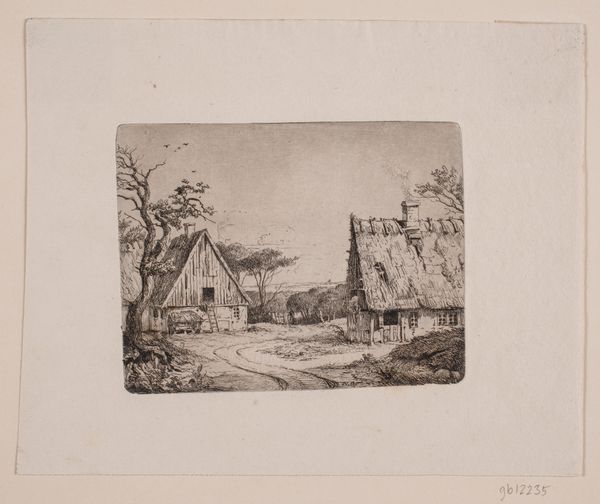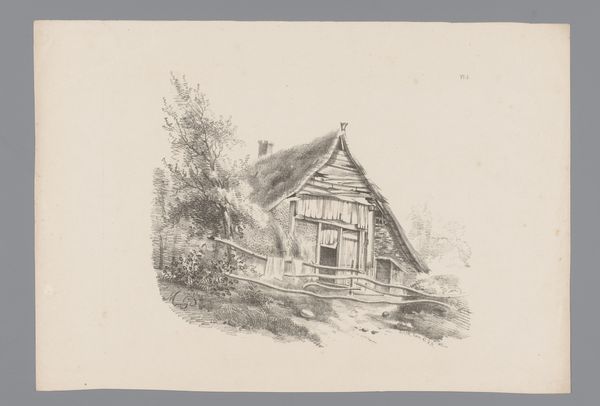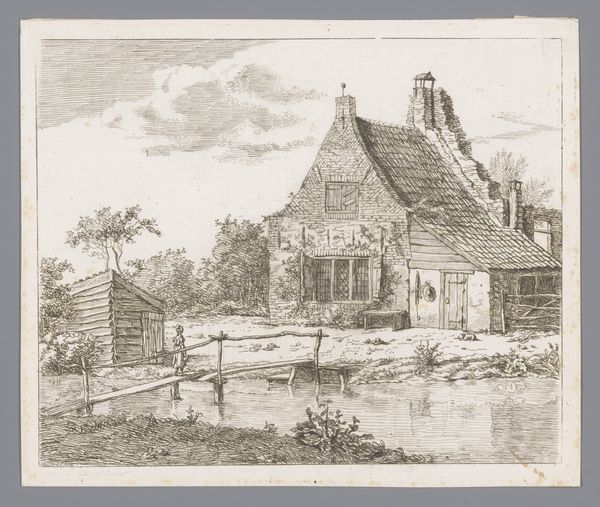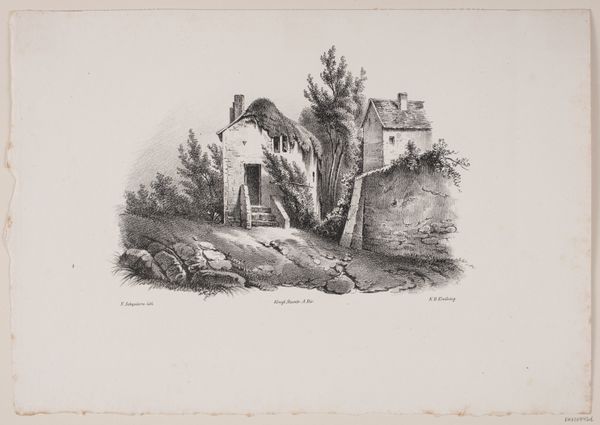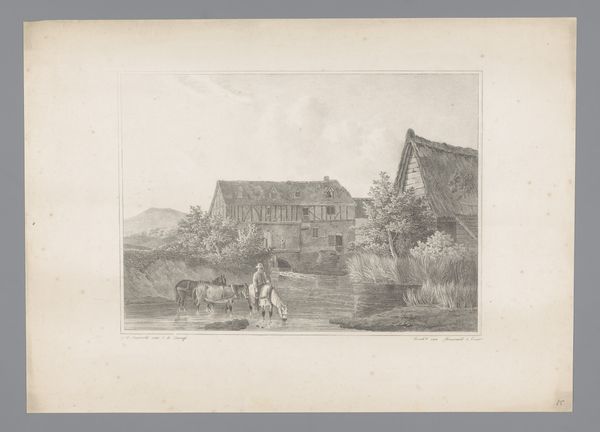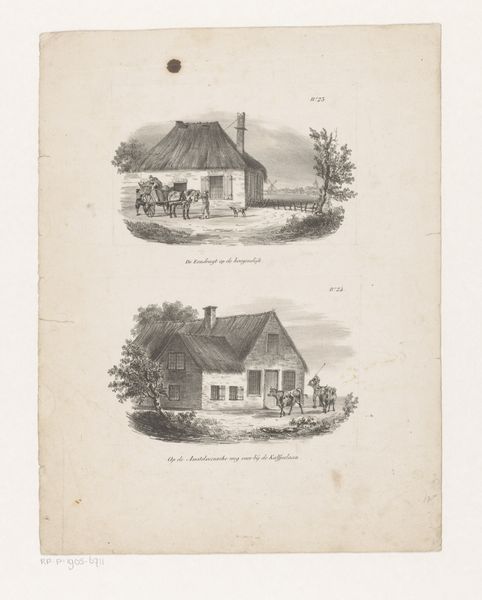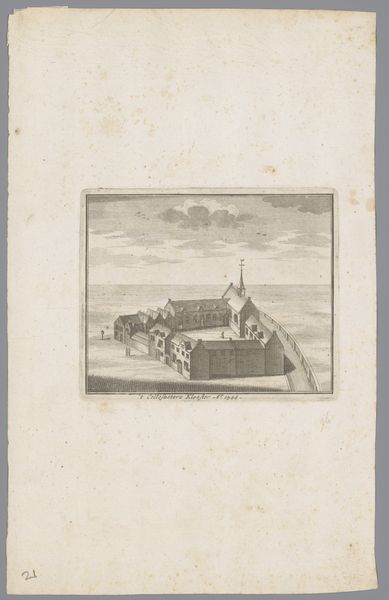
drawing, pencil
#
drawing
#
landscape
#
romanticism
#
pencil
#
realism
Dimensions: height 165 mm, width 253 mm
Copyright: Rijks Museum: Open Domain
Curator: This pencil drawing, titled "View of a House in a Hilly Landscape," was completed by Paulus Lauters in 1839 and is now held in the Rijksmuseum. Editor: There’s a quiet solemnity to this scene, wouldn’t you say? The subdued tones, the humble architecture – it really emphasizes the close relationship between labor and the landscape. I see the human element, literally, with that figure walking toward the house. Curator: Absolutely. The socio-economic conditions of rural life at this time would have informed how people perceived their built environment. The work captures an interesting tension – a celebration of a certain kind of bucolic simplicity, yet also the ever-present toil it suggests. Note how the roof material suggests regional craftsmanship and access to specific local resources, also how access to such may determine social standing. Editor: Right, how things are *made*. And who made them? We can easily get swept away in the romantic vision of this drawing, a lone person in a sweeping, panoramic view, as Romanticism often depicted… Curator: Indeed, and it aligns with how national identity was being visually constructed through landscape imagery during that period. Look at how museums actively preserved and presented images like this in service of nation building! The question becomes, whose version of "nation" is this presenting, and who gets excluded? Editor: It is quite striking how little emphasis is given to the surrounding land and natural resources; we can surmise then that they weren’t the important point! I can’t help thinking that this view, from a slight elevation, suggests someone else owns it; there’s the shadow of capitalist class-consciousness on this house’s wall! Curator: Exactly, art patronage played a role. Consider who was commissioning landscapes versus who was actually living and working in them, and what messages they intended to convey. Editor: I hadn’t looked at it that way. Thinking about labor relations puts the sketch into a new light, definitely adding depth to it, versus a simplistic romantic notion. Thanks for the insight! Curator: My pleasure; it’s thinking about these connections, between the social, economic and historical forces shaping visual art, which offers the most engaging ways to discuss works like this.
Comments
No comments
Be the first to comment and join the conversation on the ultimate creative platform.
